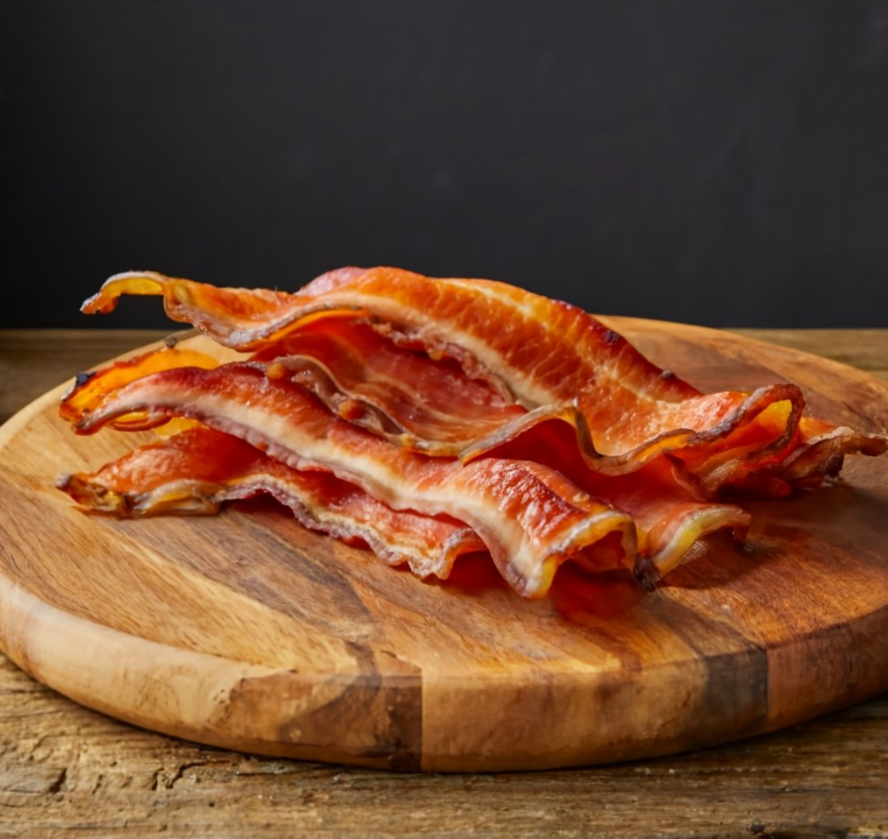Smoked Bacon Without Grilling: A Guide to Safe Consumption

Bacon, a cured and smoked pork product, is a popular breakfast staple and culinary ingredient enjoyed worldwide. However, concerns have been raised about the safety of consuming smoked bacon without grilling or further cooking. This article aims to provide a comprehensive analysis of the potential risks and safety considerations associated with eating smoked bacon without grilling, offering expert insights and practical guidance to ensure food safety.
Understanding Smoked Bacon
Smoked bacon is a type of cured pork belly that undergoes a smoking process, typically involving exposure to smoke from hardwood or other natural sources. This process imparts a distinctive flavor and aroma to the bacon and partially cooks it. However, it is important to note that smoking alone does not fully cook the bacon and does not eliminate the potential presence of harmful bacteria.
Safety Concerns
Consuming uncooked or undercooked bacon poses several safety concerns due to the potential presence of harmful bacteria, such as Salmonella and Campylobacter. These bacteria can cause foodborne illnesses, leading to symptoms like abdominal pain, nausea, vomiting, and diarrhea. In severe cases, foodborne illnesses can have more serious health implications, especially for vulnerable populations such as young children, the elderly, and individuals with weakened immune systems.
Cooking Bacon to Ensure Safety
To ensure the safety of smoked bacon, it is crucial to cook it thoroughly before consumption. This can be achieved through various cooking methods, including grilling, frying, baking, or microwaving. The key is to reach a minimum internal temperature of 165°F (74°C) as recommended by the United States Department of Agriculture (USDA). This temperature is sufficient to kill any potential pathogens and eliminate the risk of foodborne illnesses.
Risks of Eating Uncooked Bacon
Consuming uncooked or undercooked bacon can increase the risk of foodborne illnesses caused by bacteria like Salmonella and Campylobacter. These illnesses can manifest in various symptoms, including abdominal pain, nausea, vomiting, and diarrhea. In severe cases, foodborne illnesses can lead to more serious health complications, such as bloodstream infections, arthritis, and Guillain-Barré syndrome.
Alternative Bacon Options
For individuals seeking a convenient and safe alternative to grilling smoked bacon, precooked or fully cooked bacon products are available in the market. These bacon options undergo a thorough cooking process during manufacturing, ensuring their safety for consumption without additional cooking. Precooked bacon can be easily reheated or added to dishes without the need for further grilling or cooking.
Flavor and Texture Considerations
While cooking bacon alters its texture and flavor profile, it is important to note that the cooking process enhances the bacon’s overall eating experience. Cooking bacon develops its flavors, creates a crispy texture, and releases its characteristic smoky aroma. Properly cooked bacon has a more pronounced taste and a satisfying texture compared to uncooked or undercooked bacon.
Conclusion
In conclusion, consuming smoked bacon without grilling poses potential safety risks due to the presence of harmful bacteria. To ensure food safety, it is essential to cook bacon thoroughly to an internal temperature of 165°F (74°C) before consumption. Alternative bacon options, such as precooked or fully cooked bacon, provide a safe and convenient alternative for individuals seeking to avoid grilling. While cooking bacon alters its texture and flavor, it enhances the overall eating experience and develops the bacon’s distinctive taste and aroma.
FAQs
Why is it important to cook bacon thoroughly before consumption?
Cooking bacon thoroughly helps to eliminate harmful bacteria, such as Salmonella and Campylobacter, which can cause foodborne illnesses. Reaching an internal temperature of 165°F (74°C) ensures the safety of bacon for consumption.
What are the potential risks of eating uncooked or undercooked bacon?
Consuming uncooked or undercooked bacon increases the risk of foodborne illnesses, leading to symptoms like abdominal pain, nausea, vomiting, and diarrhea. In severe cases, foodborne illnesses can have more serious health implications.
How can I ensure that my bacon is cooked thoroughly?
To ensure thorough cooking, use a meat thermometer to check the internal temperature of the bacon. It should reach a minimum of 165°F (74°C) before consumption.
Are there alternative bacon options that are safe to eat without grilling?
Yes, precooked or fully cooked bacon products are available in the market. These bacon options undergo a thorough cooking process during manufacturing, making them safe for consumption without additional cooking.
Does cooking bacon alter its flavor and texture?
Yes, cooking bacon changes its texture and flavor profile. However, the cooking process enhances the bacon’s overall eating experience by developing its flavors, creating a crispy texture, and releasing its characteristic smoky aroma.
How can I enjoy the flavor of bacon without compromising safety?
To enjoy the flavor of bacon while ensuring safety, cook it thoroughly to an internal temperature of 165°F (74°C). Alternatively, opt for precooked or fully cooked bacon products, which provide a safe and convenient option for bacon consumption.
